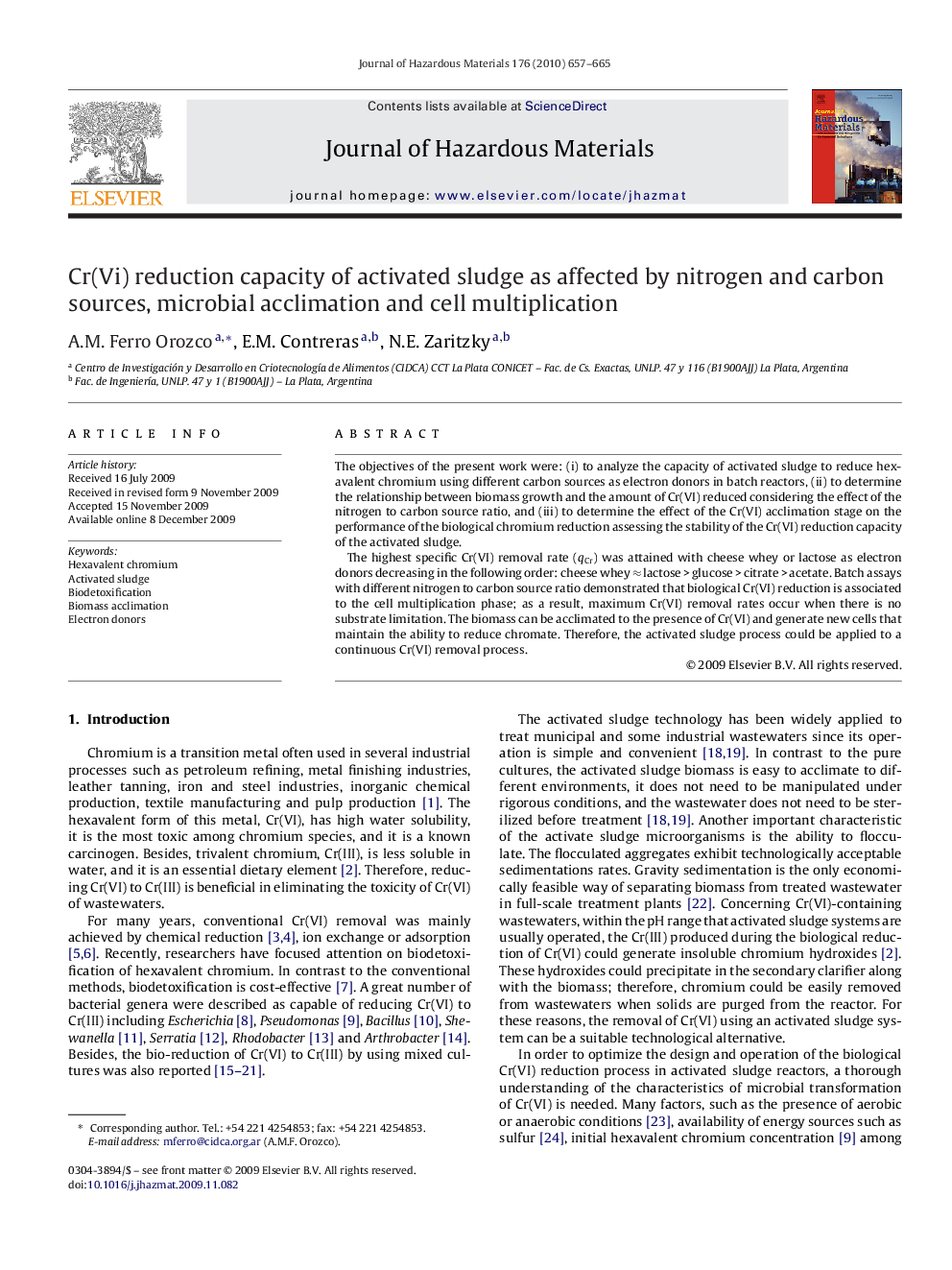| Article ID | Journal | Published Year | Pages | File Type |
|---|---|---|---|---|
| 580615 | Journal of Hazardous Materials | 2010 | 9 Pages |
Abstract
The highest specific Cr(VI) removal rate (qCr) was attained with cheese whey or lactose as electron donors decreasing in the following order: cheese whey â lactose > glucose > citrate > acetate. Batch assays with different nitrogen to carbon source ratio demonstrated that biological Cr(VI) reduction is associated to the cell multiplication phase; as a result, maximum Cr(VI) removal rates occur when there is no substrate limitation. The biomass can be acclimated to the presence of Cr(VI) and generate new cells that maintain the ability to reduce chromate. Therefore, the activated sludge process could be applied to a continuous Cr(VI) removal process.
Related Topics
Physical Sciences and Engineering
Chemical Engineering
Chemical Health and Safety
Authors
A.M. Ferro Orozco, E.M. Contreras, N.E. Zaritzky,
